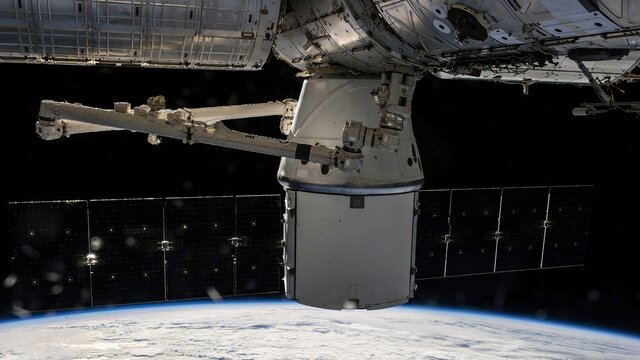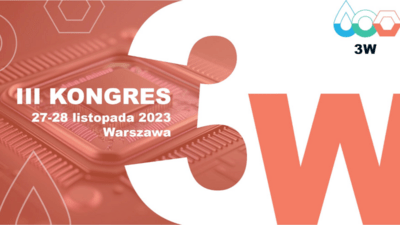What comes to mind when you hear about the “Polish space industry”? Is it the exciting vision of satellites marked with our national emblem orbiting the Earth, or perhaps scientists in white coats working on cutting-edge technologies? Or maybe it’s something abstract that seems to exist only in the most developed countries in the world? In fact, the Polish space industry is a dynamically growing sector that includes hundreds of companies and scientific research organizations, employs thousands of people, and has many spectacular successes to its credit. We asked Konrad Dziadkowiak, Coordinator of the Space Technology Cluster, about how it works and what its plans are for the future.
In Poland, there are over 400 companies that are involved in the broadly defined space industry. What exactly do they do?
Konrad Dziadkowiak: For example, they build satellites that collect a lot of valuable data. The Space Research Center of the Polish Academy of Sciences has taken part in several dozen space missions and is the creator or co-creator of over 80 objects launched into space. These include the first Polish scientific satellites, Lem and Heweliusz. Meanwhile, KP Labs has built the Intuition-1 satellite, which is a miniaturized hyperspectral device. It contains a specialized camera with high spectral resolution in the visible and near-infrared range, which allows for more information to be obtained compared to currently used tools. The acquired data can find applications, for example, in agriculture, forestry, or environmental protection. Its launch into low Earth orbit is scheduled for October this year aboard Falcon 9, as part of the Transporter-9 mission.
Creotech Instruments is participating in the REACTS project: “Responsive European Architecture for Space”, implemented under the European Defense Fund. The aim of this project is to prepare a European system that ensures the launch of new satellites into orbit in less than 72 hours from the occurrence of an emergency situation. The company is the coordinator of the part related to the analysis of the space segment, including space missions, satellite platforms, and system engineering.
Polish companies, N7 Space and ITTI, are participating in the development of the main software controlling the ELT telescope (European Southern Observatory) – its diameter (39 meters) is several times larger than the diameter of the mirrors of the largest currently existing optical telescopes. It is being constructed by the European Southern Observatory on the summit of Cerro Armazones in the Atacama Desert in Chile.
We also have entities in the Cluster that deal with other aspects of developing the space economy than robotics, satellite technologies, or mission control software. Zortrax collaborates with ESA in the area of 4D printing. Startup Astrotectonic is working on a satellite-based earthquake early warning system. Resquant is creating trusted platform modules using post-quantum technology to thwart quantum and conventional cyberattacks.
These are just some of the successes of Polish companies in space economy, and as you can see, they are international successes. Space has now become a domain accessible to private companies that collaborate with space agencies. International partnerships in this sector are of great importance for the development of the space economies of individual countries.
From the viewpoint of the average person, what is the significance of satellite technologies?
Konrad Dziadkowiak: Among other things, satellite technologies aid in monitoring the quality of water in natural and artificial reservoirs, monitoring water levels, cyanobacterial blooms and chlorophyll concentration in seas and inland waters. Data collected by satellites in agriculture are invaluable. They help classify land cover, so we can identify the most productive areas. We can also forecast yields and create accurate maps of crops and soils. We also use them to detect plant diseases. They enable us to track the development of biomass and map the distribution of weeds. The data are also used in forestry. They help us classify forests, identify different tree species and assess their health. As a result, we can plan afforestation effectively and in harmony with the ecosystem. In terms of environmental protection, space data allows for the creation of maps of pollutant emissions. All of this provides us with powerful tools to take care of our planet and minimize the negative impact of human activity.
It seems that Polish companies are doing great. What role does the Space Technology Cluster play in promoting the Polish space industry? How do you support your members?
Konrad Dziadkowiak: The primary objective of establishing the Cluster is to increase national competences in the field of space and satellite technologies with the participation of the commercial and scientific sectors. We help entities operating in the Polish space sector establish business relationships and identify areas of cooperation. We also create new opportunities by building relationships with foreign partners. Additionally, we actively promote our own activities and those of our members and partners. We are also working intensively on acquiring projects that Cluster members will take part in – both those which will be financially supporting the management of the Cluster, but above all, those in which willing members will engage with their competences. Naturally, we do not forget about shaping the policy and the emerging space law.
Which STC activity areas do you think are most crucial for the development of the Polish space industry in the future?
Konrad Dziadkowiak: Our strategic goals include the ability to compete effectively on the European market and to reach a 3% share of this market’s overall turnover, in accordance with the assumptions of the Polish Space Strategy. We want satellite data to be used for more effective operation of public administration and the internal demand for satellite services to be met by domestic companies. Of course, Poland's access to satellite infrastructure is equally important, particularly in the areas of security and defense.
The 3D Idea refers to water, hydrogen, carbon – are these resources somehow related to space technologies?
Konrad Dziadkowiak: These areas are inextricably linked with space technology. Since it must be transported from Earth or recycled, water is extremely valuable in space. The use of hydrogen as a fuel opens up new opportunities, such as its potential use during missions to Mars. Additionally, carbon-based technologies, particularly those related to graphene, offer hope for enhancing the efficiency of thermal management systems in the aerospace industry and satellites.
So these three areas have an impact on the development of the space sector?
Konrad Dziadkowiak: Water, hydrogen, and carbon technologies all have an impact on how the space industry develops, and each of them benefits from innovations developed as part of this interdisciplinary cooperation. This accelerates our ability to achieve new and exciting goals in space exploration. The future of the Polish space sector is full of opportunities that have not yet been discovered and the horizon of exploration is constantly expanding. Much depends on the quality of cooperation at national and international level, because the future starts now.








